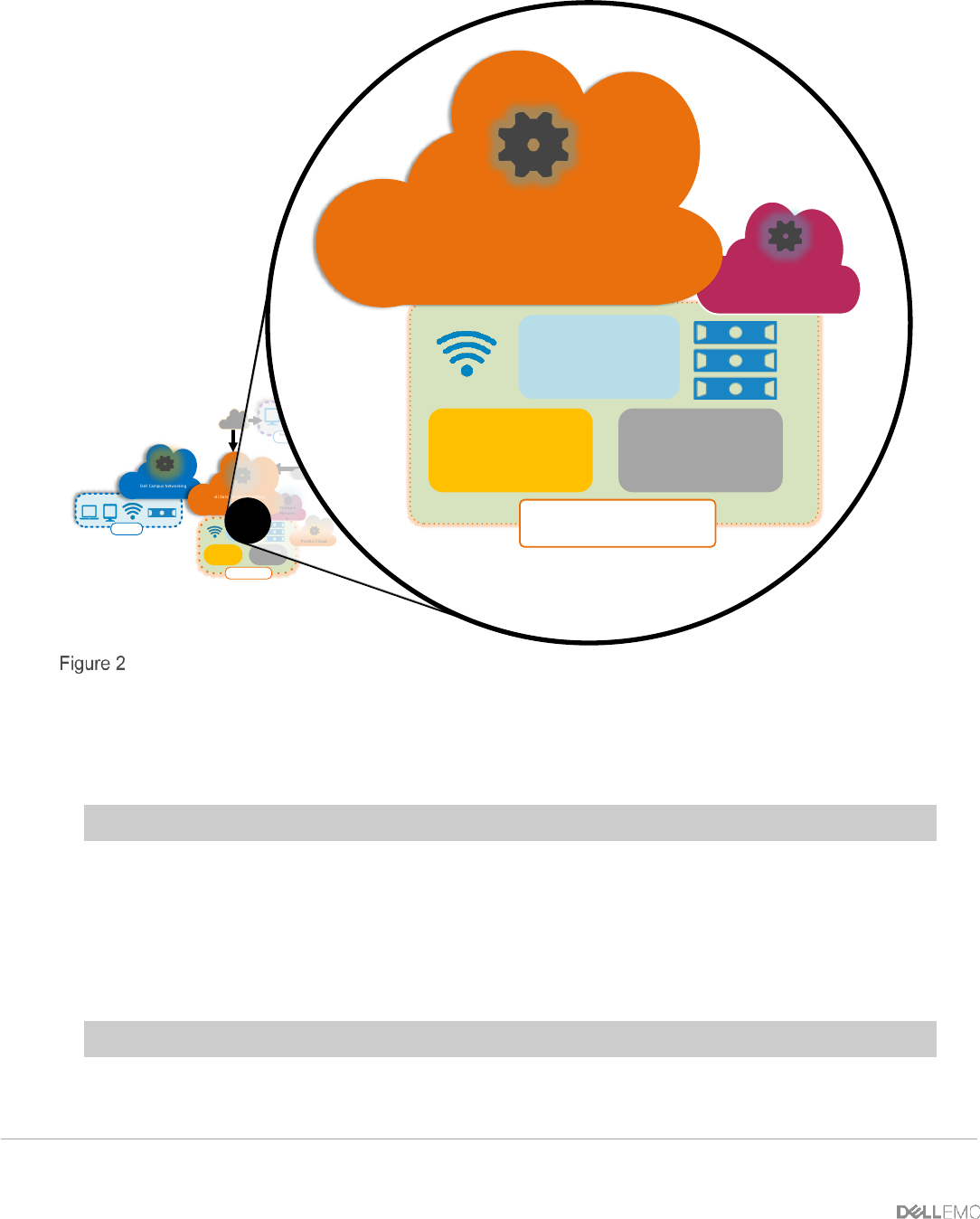Deployment Guide
Table Of Contents
- 1 Introduction
- 2 The Dell FX2 and FN I/O Modules
- 3 Initial out-of-box connectivity check and default settings
- 4 VLT and the example environments
- 5 FN IOM Dell Blade I/O manager and internal port mapping features
- 6 Environment One: Basic VLT deployment with VLT mode
- 7 Environment Two: Dell Networking switches with mVLT and IOM in Full Switch mode
- 8 Environment Three: Dell Networking switches with mVLT and FN IOM in programmable MUX mode.
- 9 Environment Four: VLT interoperability with Cisco vPC
- A References
- B Components
- C Terminology
- D Reset FN IOM to Default Factory Configuration
- E FN IOM initial out-of-box configuration and default settings
- F Support and feedback

6 PowerEdge FX2 – FN I/O Module – VLT Deployment Guide | Version 2.2
Remo te
Da ta Center s
De ll Se rvers
De ll St o rage
Data Center
De ll Net w ork
Con trollers
and S ecur ity
Ca mp us
Remote/Br anch
Offi ce
VRTX
Del l Campus Netwo rking
Intern et
D el l Data Center Ne twork ing
Pu bli c Cl oud
Storag e
Netw or
k
WA N
Dell
Servers
Dell Storage
Data Center
Dell Network
Controllers and
Security
Storage
Network
Dell Data Center
Networking
Zooming in to focus on the data center and storage networking
This deployment guide will provide a step-by-step configuration in the data center utilizing the FN I/O
Module, the PowerEdge FN410S. In this deployment guide, the two FN410S’s installed in the rear of
the FX2 chassis are configured as a virtual link trunk (VLT) pair of switches. This provides the
functionality for the pair of switches to perform as one logical switch
What is VLT?
VLT allows physical links between two switching devices to appear as a single virtual link to other
networking devices. VLT reduces the role of spanning tree protocols (STPs) by allowing link
aggregation group (LAG) terminations on two separate distribution or core switches, and by supporting
a loop-free topology. VLT provides Layer 2 multipathing, creating redundancy through increased
bandwidth, enabling multiple parallel paths between nodes and load-balancing traffic where alternative
paths exist.










